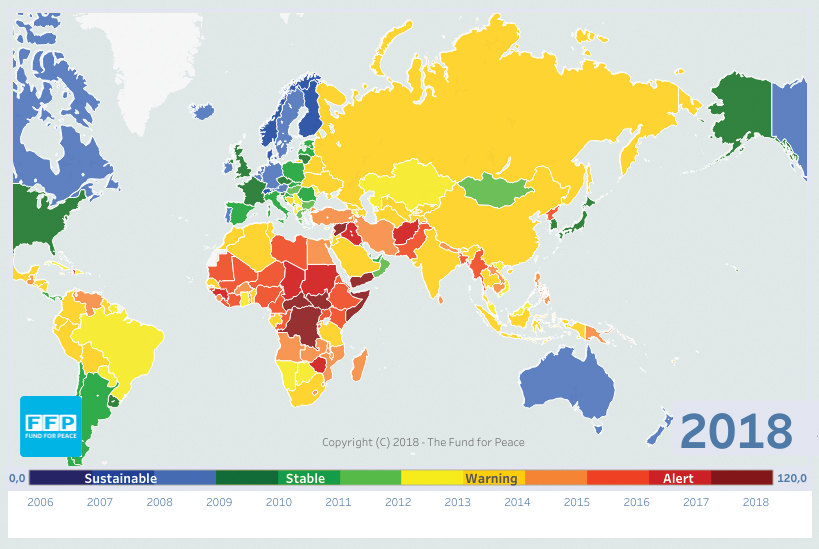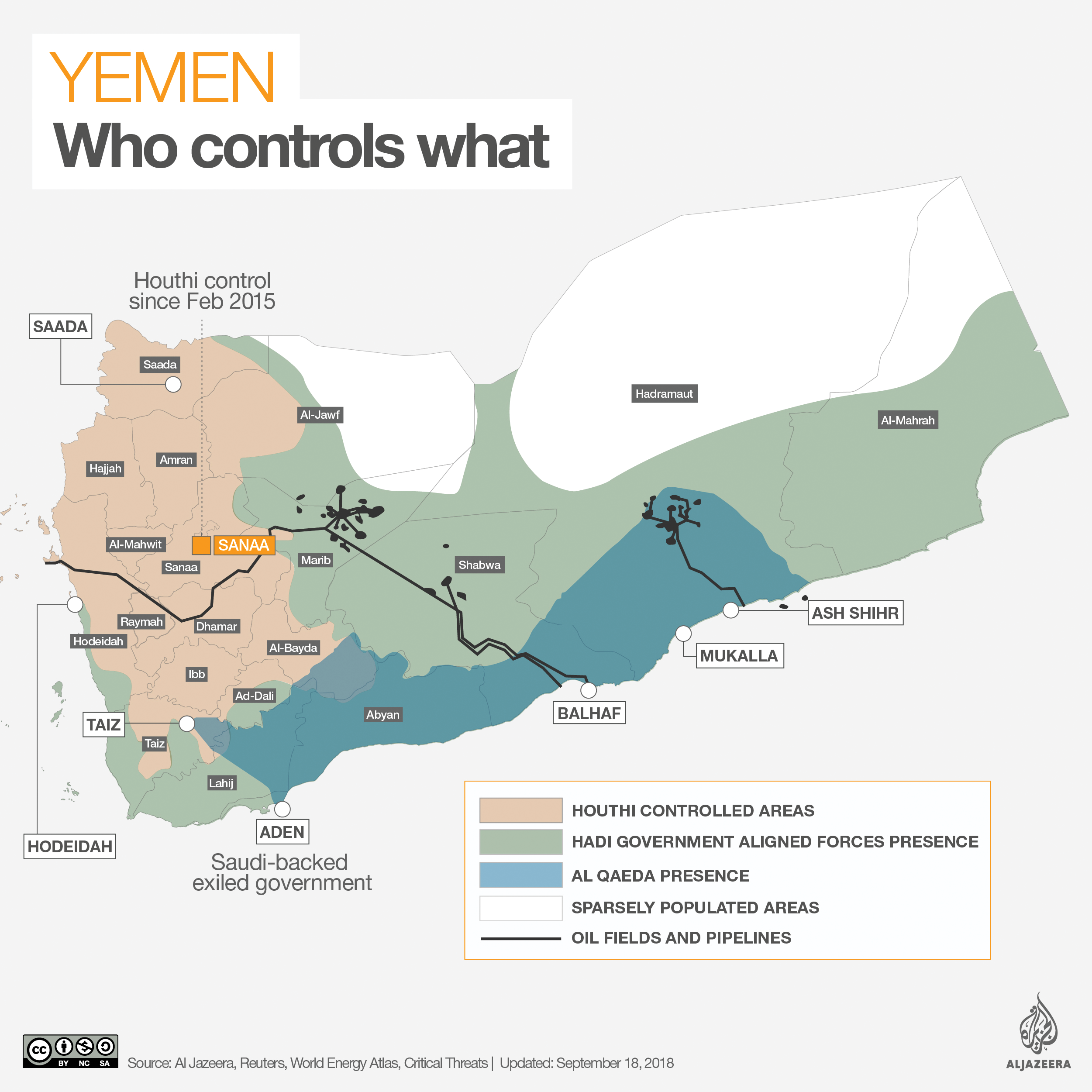Nyhet! Vi har lansert ny nettside. Del gjerne feedback enten på epost eller på Jodel.
 Annonsere?
Annonsere?
Nyhet! Vi har lansert ny nettside. Del gjerne feedback enten på epost eller på Jodel.
 Annonsere?
Annonsere?

In 2017, according to the Uppsala Conflict Data Program (UCDP), 232 global conflicts in the world resulted in 90.000 battle-related fatalities with about 76 percent of them killed by state-based violence. When Europeans think about current armed conflicts around the globe, most probably, wars like in Syria, Afghanistan, Iraq and Ukraine come to their mind because of their relatively high presence in the media. But what about all the other conflicts – does their insignificance justify one’s ignorance?
Current global conflicts
The Global Conflict Tracker (GCT) by the Council on Foreign Relations (CFR), an independent think tank based in the USA, provides a daily updated overview of 25 current major conflicts around the globe. Those consist of various types, ranging from criminal violence in Mexico, to territorial disputes (e.g. South and East China Sea, Turkey, Ukraine), sectarian conflicts (e.g. Nigeria, Myanmar), and even civil wars (e.g. Syria, Yemen, South Sudan) as well as interstate conflicts (e.g. India - Pakistan, Korea crisis).
As worsening conflicts the CFA names 11, with four of them being defined as civil wars (Yemen, South Sudan, Afghanistan, Iraq). The Fragile States Index, provided by The Fund for Peace (FFP) – an independent non-profit organization based in the USA and Nigeria – confirms those evaluations with ranking the four civil war countries mentioned above within the eleven most fragile states globally in 2018 (see figure 1).
Current situation in Yemen
Related to that, Yemen shows the highest and hence worst index value, which consists of cohesion, economic, political and social indicators, with a score of 112.7 out of 120 and the country is ranked as number three globally just behind South Sudan and Somalia. Furthermore, UN Secretary-General António Guterres calls Yemen ‘the world’s worst humanitarian crisis […][where] more than 22 million people – three-quarters of the population – need humanitarian aid and protection’. In addition, the European Commission (EC) claims that ‘the country suffers the largest cholera outbreak ever recorded in modern history, with over one million suspected cases.’ Since the outbreak of the civil war in 2011, UCDP reports around 19.000 fatalities in Yemen, with about 2.500 of them in 2017. Furthermore, the UN state that there are about two million displaced Yemenis. Looking at the historical development of the conflict, what caused this tremendous tragedy?
Historical development of the Yemen crisis
Briefly summarized, in 2011 uprisings started against the former president Saleh, who had led the country for 33 years. Additionally, the Shiite Houthi group conquered territories in the north as well as separatists did in the south and the jihadist group al Qaeda increased terrorist attacks. Consequently, Saleh stepped down and in 2012 the former deputy president Hadi was elected (in a vote with him as the only candidate) to rule the country’s democratic transition within two years. In 2014 the Houthis seized the capital Sanaa and arrested Hadi in 2015. However, he managed to flee to Saudi Arabia, which subsequently entered the war with an allied coalition of Arab states, supporting the international acknowledged government and its forces with mainly air strikes. That situation remained mostly unchanged, UN backed talks failed and the battles between the parties have since continued.
Altogether, the Yemen war is a complex conflict, initiated by revolutionary and religious arguments but also covering essential geopolitical and energy economical factors (see figure 2). The fatal consequences of the still ongoing crisis are tremendous sufferings for millions of people and thousands of deaths. Although the humanitarian catastrophe in Yemen gets worse year by year, no improvement seems to be in sight and according to the EC, ‘the country remains a neglected crisis, both financially and politically’.

International ignorance and suggested countermeasures
When there are millions of Yemenis close to death because of famine, diseases or violence, why is there no intervention by international institutions or at least more humanitarian aid? It can be explained by various reasons that ordinary citizens are not able to influence, but also because of the lack of media presence and political pressure regarding to such conflicts. However, people can create some awareness about these topics instead of neglecting them and share the information with their environment, or even participate in demonstrations. Consequently, media would be more interested in reporting about these concerns because of the increased demand and politicians would be forced to make statements about concerns of public interests, if they wanted to stay popular.
In conclusion, do people simply ignore conflicts with tremendous sufferings and amounts of fatalities, such as in Yemen, Somalia or South Sudan because they are insignificant? Not at all. Therefore, people could contribute to awareness and thereby maybe also to an improvement of the conflicts themselves.